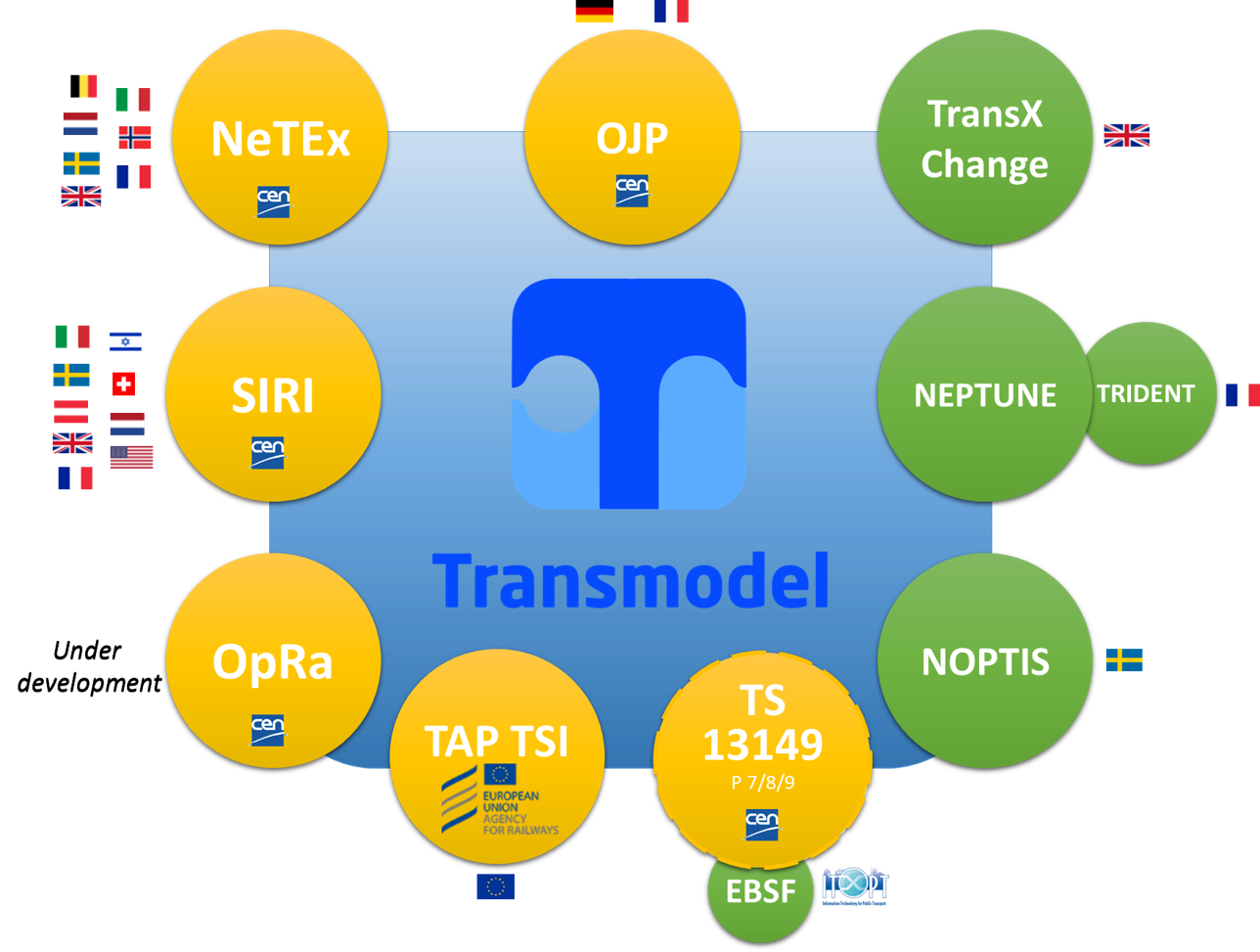Transmodel is the European Reference Data Model for public transport and constitutes an offer to public transport companies and other providers of services related to the process of passenger transportation (planning, operation and information), to suppliers of software products supporting these processes, and to consultants and other experts acting in the field of public transport in the widest sense.
The reference data model, developed at conceptual level, can support the development of software applications, their interaction or combination in an integrated information system, and the system‘s organisation and information management which rules the utilisation of the existing telematics environment in a company (or group of companies) running computer applications supporting the different functional areas of public transport.
As a reference standard, it is not necessary for individual systems or specifications to implement Transmodel as a whole. It is possible to describe for those elements of systems, interfaces and specifications which fall within the scope of Transmodel:
- the aspects of Transmodel that they have adopted;
- the aspects of Transmodel that they have chosen NOT to adopt.
Transmodel may be applied to any framework for information systems within the public transport industry, but there are three circumstances to which it is particularly suited:
- specification of an organisation’s ‘information architecture’;
- specification of a database;
- specification of a data exchange interface.
The Reference Data Model (Transmodel v6) covers the following data domains:
- Network Description: routes, lines, journey patterns, timing patterns, service patterns, scheduled stop points and stop places: this part corresponds to the network description as in Transmodel V5.1 extended by the relevant parts of IFOPT (EN28701);
- Timing Information and Vehicle Scheduling: runtimes, vehicle journeys, day type-related vehicle schedules;
- Passenger Information: planned and real-time;
- Operations Monitoring and Control: operating day-related data, vehicle follow-up, control actions;
- Fare Management: fare structure and access rights definition, sales, validation, control of access rights and/or travel documents;
- Management Information and Statistics including data dedicated to service performance indicators;
- Driver Management:
- Driver Scheduling: definition of day-type related driver schedules,
- Rostering: ordering of driver duties into sequences according to some chosen methods,
- Driving Personnel Disposition: assignment of logical drivers to physical drivers and recording of driver performance.
Transmodel is a conceptual model, developed and presented in UML. It may be used for the tackle the definition of a data base schema or data exchange messages, however, Transmodel task is not implementation but the definition of a conceptual based on UML (Enterprise Architect was used to create it) of the different public transport domains. The UML model is available from the Transmodel Web Site.
Here are two standardized data exchange format as regards the implementation of Transmodel: SIRI and NeTEx. These projects have used submodels of Transmodel to generate physical models and xml schemas. Currently one more implementation using Transmodel is being standardised: Open API for Distributed Planing Systems and another one is planned: Operational Raw Data exchange.

Yes, there is a staged approach in the Transmodel update process;Part 1- Common Concepts, Part 2- Public transport Network and Part3 – Timing Information & Vehicle scheduling documents have already been published. Part 4: Operations Monitoring and Control and Part 5: Fare Management documents will be ready by end of 2017. Part 6: Passenger Information and Part 7: Driver Management early Part 8 – Management Information and Statistics mid 2018.
Since Transmodel is a CEN standard, to get the documentation you have to contact your national standardisation body.
